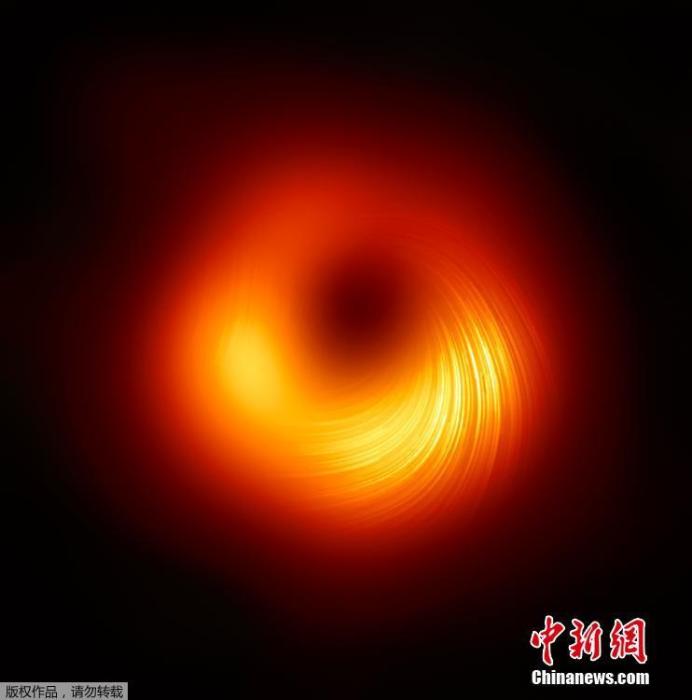China News Service, Shanghai, March 24 (Zheng Yingying) At 22:00 on March 24th, Beijing time, the Event Horizon Telescope (EHT) cooperative organization that successfully captured the first black hole photo in human history has provided a new opportunity to reveal the M87 supermassive black hole. A new perspective: its image under polarized light.
This is the first time that astronomers have measured polarization information that characterizes the magnetic field so close to the edge of a black hole.
This result is crucial for explaining how the galaxy M87, which is 55 million light-years away from our planet, propagates a huge jet of energy from its core.
At 22:00 on March 24th, Beijing time, the Event Horizon Telescope (EHT) collaboration organization, which successfully captured the first photo of a black hole in human history, provided a new perspective for revealing the M87 supermassive black hole: its image under polarized light.
This is the first time that astronomers have measured polarization information that characterizes the magnetic field so close to the edge of a black hole.
Most of the matter near the edge of the black hole will fall into it. However, some particles around the black hole will escape immediately before being captured and propagate outward in the form of jets.
How did matter fall into the black hole?
How is the jet produced?
These physical processes are closely related to the action of the magnetic field.
The EHT polarization image of this new black hole and its shadow enabled astronomers to successfully uncover the magnetic field around the black hole for the first time to better understand these physical processes.
On April 10, 2019, scientists from around the world jointly released the first ever black hole image, revealing a bright ring structure and its dark central region-the shadow of the black hole, which aroused the attention of the outside world.
Since then, the EHT partner organization has conducted in-depth research on the supermassive black hole data collected in 2017 at the center of the M87 galaxy.
They found that a considerable part of the light around the M87 black hole is polarized.
Eight researchers from the Shanghai Astronomical Observatory of the Chinese Academy of Sciences participated in the imaging of the "new black hole photo".
Lu Rusen, a member of the EHT partner and a researcher at the Shanghai Astronomical Observatory of the Chinese Academy of Sciences, introduced during an interview in Shanghai on the 24th that obtaining a polarization image of a black hole is full of challenges, such as weak polarization characteristics and the need for sufficient resolution. This also explains why the first black hole After the images were released, it took nearly two years for the polarized images to be available.
Yuan Feng, deputy director of the Shanghai Astronomical Observatory of the Chinese Academy of Sciences, said that seeing the polarization image this time has two main scientific meanings. One is about the generation of black hole jets. Through polarized light measurement, we can infer the strength and configuration of the magnetic field. It is particularly important for the generation of black hole jets; secondly, the black hole photo is emitted by gas. "The gas is on the accretion disk. After this photo of the accretion disk was released last year, there was still a problem left. In the end, the type of the accretion disk is MAD. (Strong magnetic field accretion disk) or SANE (standard accretion disk)? From this image, we infer that it is a strong magnetic field accretion disk."
It is reported that more than 300 researchers from multiple organizations and universities around the world participated in this research.
In order to observe the center of the M87 galaxy, this collaboration has connected 8 telescopes around the world to create a virtual earth-sized telescope called EHT.
The resolving power of EHT is equivalent to the resolution required to see a credit card on the lunar surface on the earth, which allows the research team to directly observe the shadow of the black hole and the surrounding halo.
(Finish)

